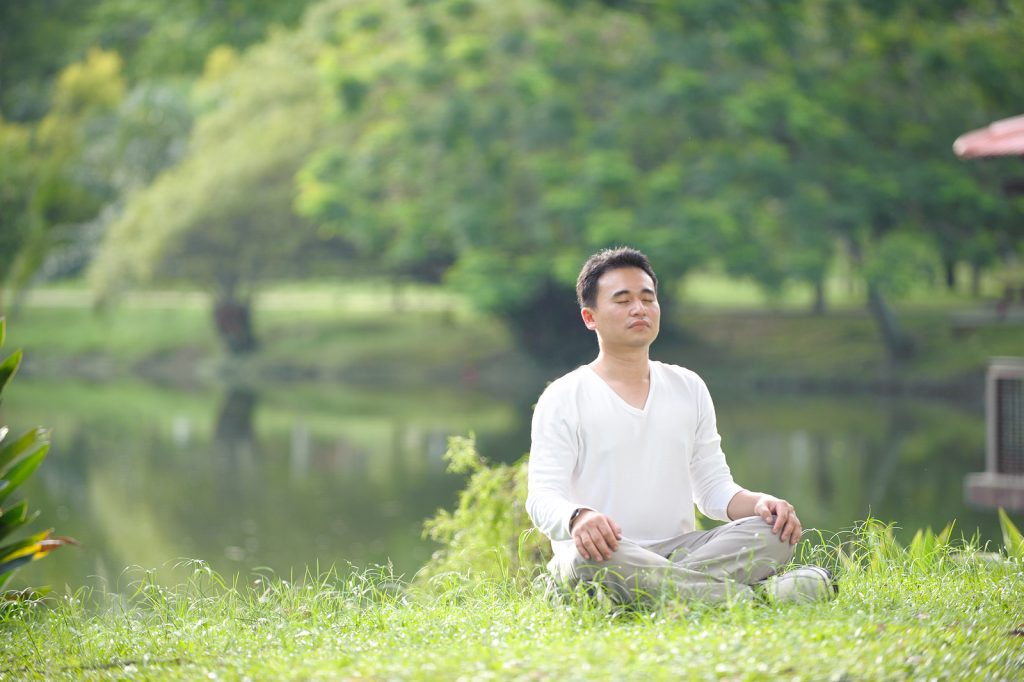Meditating on the Body

BY | Ven Sangye Khadro
Desire is one of the greatest hindrances to our spiritual development, and also to our happiness in the here-and-now. We have so much wonderful potential: to be peaceful, happy and relaxed, to have loving and satisfying relationships with others, and to develop our mind to incredible states of bliss, compassion and wisdom, but desire prevents us from realising this potential. It causes us to feel dissatisfied with what we have, jealous of others who have more, fearful and anxious of losing what we cherish and are attached to. We think it brings happiness, but in reality it causes many problems, and a lot of suffering. Think of all the people who are in prison because they could not control their desire! Also, when we try to meditate, it hinders our ability to stay concentrated: our mind is always wandering to objects of desire.
Reality about the body
We can have desire for many different kinds of objects, but probably the strongest form is sexual desire, attachment to the human body. I think that one of the main reasons we have trouble with desire is that we have the view that the body is attractive and a source of pleasure. We have this view naturally, from countless lifetimes of habituation, but is it also reinforced by our exposure in this life to such things as movies, advertising, art and other sources of information. Not to mention the attitudes of most of the people around us.
This view is clearly mistaken, because if we look through an Anatomy book or mentally dissect the body into its components, we find nothing that is inherently attractive. Lama Zopa Rinpoche spoke about this in a teaching he gave in London two years ago. Rinpoche was talking about how delusions cause us to see people and other objects in a mistaken, hallucinated way.
“If you analyse desire, it’s a hallucinated, obscured, cheating mind; not an illuminated, enlightened mind. How it cheats is that when desire arises towards the object, you can’t meditate, and you can’t meditate on the ultimate nature of the object. It blocks you from seeing the ultimate nature, emptiness, which is so important for you to realise, in order to liberate yourself from the cycle of death and rebirth, and from suffering and the different realms.”
“…Not only that, but desire is completely hallucinated from the true nature of the object. It has another view of the object…. For example, if you analyse a body: below the skin there’s blood, muscles, skeleton, flesh… it’s terrifying. When we see blood coming from a cut on someone’s skin, we feel terrified. We’re not attached to these things. These things are all wrapped by the skin…. And if we take the skin off the body and put it aside, and then check to see if we are attached to it, we can see that it’s not worth being attached to. And if we look at our skin under a microscope, it’s like mountains. It’s all a collection of atoms. There’s nothing there to be attached to.” *
I thought that the Theravada tradition would have some useful practices for dealing with desire and attraction to the body, so I wrote to Ven Pasanno, abbot of Abhayagiri Monastery in Northern California. He sent me the following quotation from the Sutra on the Foundation of Mindfulness (MahaSatipatthana Sutra, Digha Nikaya 22), in which the Buddha advises the monks to reflect on the parts of the body.
This kind of meditation is sometimes referred to as meditation on “ugliness” or “foulness” however, Ven Pasanno says that the actual term in Pali, asubbha, literally means “unattractive” and he goes on to explain: “On reflection we can see that the Buddha is not having us look at the body and be repelled by it or have distaste for it in any way, but to be discerning and dispassionate in the same way that one looks at a bag with various kinds of beans and seeds and whatnot. The goal is to lessen lust and to cultivate dispassion and coolness. This is the standard meditation given to the newly ordained to begin the holy life with decreasing attachments to sensuality.”
Here is the quotation from the sutra:
Furthermore…just as if a sack with openings at both ends were full of various kinds of grain — wheat, rice, mung beans, kidney beans, sesame seeds, husked rice — and a man with good eyesight, pouring it out, were to reflect, “This is wheat. This is rice. These are mung beans. These are kidney beans. These are sesame seeds. This is husked rice.” In the same way, monks, a monk reflects on this very body from the soles of the feet on up, from the crown of the head on down, surrounded by skin and full of various kinds of unclean things: In this body there are head hairs, body hairs, nails, teeth, skin, flesh, tendons, bones, bone marrow, kidneys, heart, liver, pleura, spleen, lungs, large intestines, small intestines, gorge, faeces, bile, phlegm, pus, blood, sweat, fat, tears, skin-oil, saliva, mucus, fluid in the joints, urine.
How to meditate on the body
As a way to meditate on this, I suggest that you start the meditation by calming your mind, clearing out all other thoughts, and then generating a positive, bodhicitta motivation for doing it (i.e. aspiring to attain enlightenment for the benefit of all beings). Then mentally go through the parts of the body as mentioned in the sutra, spending several moments on each part, and seeing that part of the body in your mind’s eye. I don’t think you need to make any commentary on what you see, just be aware, with mindfulness and “dispassion”, as Ven Pasanno says.
You could make a tape of yourself reading the list of parts, pausing between each one — that way you wouldn’t have to open your eyes to read them. I think you could also improvise, using whatever knowledge you have of western physiology to add more parts to the Buddha’s list (e.g. the brain). Or you could go through the body from the head down to the toes, or from the skin inside to the bones. The meditation could be done with one’s own body, or with the body of someone you are attracted to. The point is to DO IT! — from time to time, if not on a regular basis. Otherwise, when some attractive body appears in front of us, WHAM! Desire takes over our mind….
Imagine how your body, or the body of someone you’re attracted to, will look 20 years from now…30 years from now…50 years from now… 100 years from now!
Another useful meditation is on impermanence. We can contemplate how our body is made of cells, atoms and subatomic particles, all of which are changing every nanosecond. And as they change, we’re getting older. Imagine how your body, or the body of someone you’re attracted to, will look 20 years from now…30 years from now…50 years from now…100 years from now! That’s very powerful. Sometimes people say: “It’s not the person’s body I’m attached to, it’s their mind.” Oh yeah? Well, imagine that mind in an 80-year-old body and see if you still feel the same way.
Finally, if you have difficulty dealing with desire or attachment on your own, it’s a good idea to talk with one of your teachers or with a senior sangha member. When we try to deal with a problem like desire on our own, our mind sometimes just goes around in circles and it’s hard to find a way out. So talking with someone who has more experience, and who has probably been through the same problem themselves, can be very helpful. Good luck!
*From a teaching given in Jamyang Centre in London, 31 March, 2001. This article was originally published in the Sangha Magazine, Oct 2003, and modified slightly by the author for use in Awaken Magazine Issue 2.

